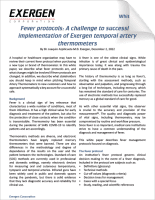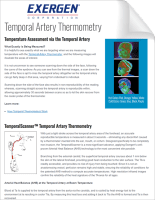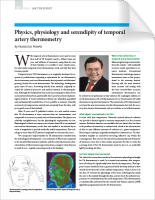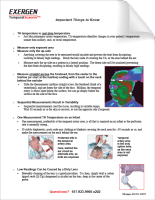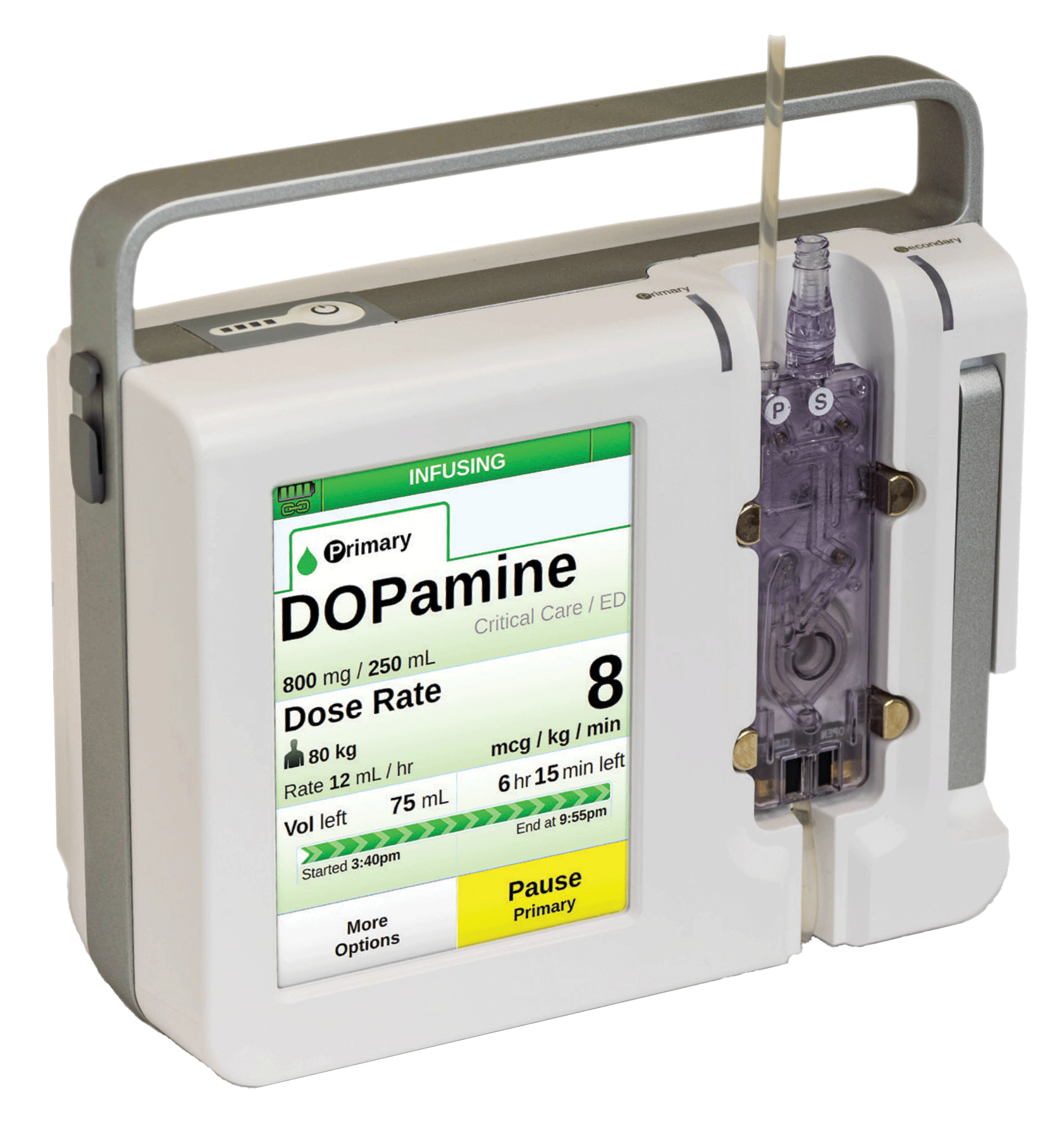Intelligent automation takes staffing practices from reactive to proactive.
This article is sponsored content supplied to American Nurse Journal by Hospital IQ, Inc., and is not peer reviewed.
Staffing—it’s complicated.
As a frontline nurse, you acutely feel the pain when plans to adequately staff units go awry.
As a nurse leader, you are constantly challenged by the impact of limited resources, in search of a staffing strategy to relieve your team’s burnout—while still ensuring optimal patient care and mitigating fiscal impacts.
Part of the problem is that many hospitals still follow inflexible, “old school” staffing practices that leave nursing leaders and the staffing office scrambling, resulting in unbalanced workloads.
Intelligent automation can help.
More and more, forward-thinking healthcare staffing experts are employing innovative technologies to provide increased visibility into staffing needs across their health systems. In the hospital environment, intelligent automation, the use of artificial intelligence, workflow automation, and communication help increase visibility into current and future patient care needs and streamline collaboration to ensure proper staff alignment. Nursing leaders not only have improved transparency, but precise staffing recommendations to help inform their staffing decisions days in advance. These systems ingest and synthesize data across clinical, operational, and workforce management systems and present the information in a useful, consolidated manner to nursing leaders and staffing coordinators, giving them the transparency, communication tools, simplicity, and portability they need to allocate staff efficiently and optimally, according to Hospital IQ, a provider of predictive hospital operations software.
Real-world impact at the bedside—one case study
Before Health First (one of Florida’s leading nonprofit health systems, which employs more than 1,200 nurses at four hospital campuses) changed its staffing system, lack of efficient communication between the staffing office and clinical staff was one of the main challenges confronting Jessica Maynor, BSN, RN, EMHA, director of staffing services.
“Our previous staffing system lacked the capability of communication between our central staffing office and our nursing units with our managers and our clinical charge nurses,” Maynor said. “Every time there was a change in staff coming onto the unit or there was a change in the redeployment of our staff, that would cause a manual call. It was a very time consuming to do staffing for our four hospitals.”
According to Maynor, two additional critical roadblocks were visibility and transparency.
“Previously, we did not have real-time interfacing with our scheduling system, so there were delays in any changes that we had made in our scheduling system for our staffing office to view and for our nursing units,” she said.
Without the ability to see real-time changes in staffing on the units, the staffing office often found itself basing decisions on inaccurate information. For example, the staffing office would be led by available data to assume that a unit had more staff than it actually had for a particular shift.
“It really made staffing for the shift very complex because, just when you thought you had everything figured out, the system would update and you have to rework the whole thing and readjust staffing,” Maynor said.
Health First’s previous system, like many still in use today, lacked the provision of an enterprise-wide view, which gives nursing supervisors and the staffing office a real-time look at what is going on across all four hospitals.
Although bedside staff were not directly involved in the back-and-forth efforts to address and overcome these and other staffing challenges, the
result was that frontline nurses were often left without appropriate resources allocated to their units—yielding limited staff for less-than-optimal care coverage. When suboptimal staffing practices become accepted as the status quo within an organization, it creates a highly stressful environment that ultimately leads to nurse burnout, high turnover, and can degrade the quality of patient care.
How Health First solved staffing challenges
Health First implemented Hospital IQ’s Staffing Solution, improving transparency and communication between the central staffing team and clinical charge nurses.
“On the ground, the clinical charge nurses know a lot better what is going on with the acuity of the types of patients. So, with this new system and all the communication it has brought to the table, we are able to have an open conversation with them all day long and know how things are changing,” said Robert Ali, Health First staffing assistant. “They can let us know if they need more staff, if they are good where they are, or if they have extra staff that can help out other units. With the speed of communication that this system has brought us, it sped up our whole process of reallocation of staff and making sure our nurse-to-patient ratios are as balanced as they can be.”
In short, Hospital IQ empowered Health First move from being reactive to proactive in its staffing practices.
“Whereas our old system only showed the current day, Hospital IQ gives us the ability to see what is coming 3, 4, 5, 7 days in advance. That helps us to account for volume changes at our hospitals, so we are not scrambling the day of in a crisis,” Maynor said.
Hospital IQ provides visibility across Health First’s four hospitals, showing real-time changes in discharges, admissions, and more so staffing can be adjusted on the spot, according to Maynor.
“We can reallocate resources from one unit to another to help balance the workload for our nurses at the bedside,” Maynor said. “That directly impacts the care that our patients are receiving.”
In addition, Hospital IQ offers customization options to address nuances—such as capability considerations, last float date, and sitter needs—that impact nurses’ work lives and patient care.
Hospital IQ’s data transparency allows Health First to easily, quickly, and—most importantly—equitably float nurses when required.
“Hospital IQ partnered with us to build a column of last float date for each individual within our nursing departments,” Maynor said. “The ‘Last Float’ column displays the date the nurse was last floated outside of their home department, which has enabled all of our nurse managers, charge nurses, and staffing office assistants to visualize the dates and float the individual who has not floated outside of their department within longest time period.”
The staffing technology also streamlines sitter needs. According to Jennifer Kelly, manager of the resource team at Health First, “We have sitters for psych patients who may be at risk. Hospital IQ was helpful in adding those to our staffing plan. Not a lot of staffing systems have that component for sitters. We can see where the sitter needs are for the organization.”
Hospital IQ also takes ICU patient acuity into account. For instance, the system accounts and allocates for complex ICU patients who might require a 1:1 staffing ratio versus 1:2.
“We have received positive feedback from our charge nurses, staffing assistants, and data managers that the system is easy to use and easy to understand,” Kelly said. “It was a smooth transition from our previous system to the current one and the transition did not have a huge impact on our workflow.”
Mercy One Des Moines: A COVID case study in data-based staffing solutions
The pandemic only amplified already evident staffing challenges and pressures on many frontline nurses in hospitals nationwide—including at Mercy One Des Moines, a network of health systems in Iowa that has implemented Hospital IQ.
“We saw an increase in nurse-to-patient ratios during COVID that was very difficult, and we had to adjust and determine the best ways to use the resources that we had and where to place them to minimize that impact,” said Alison Bruckner, DNP, MBA, RN, Mercy One market director of nursing for acute care and the emergency department.
There were areas of the hospital in which there were not as many patients, while other areas were overflowing. By leveraging Hospital IQ, Mercy One was able to deploy staff more quickly to care for surges of COVID-19 patients, said Elizabeth Woodvine, BAN, RN, nursing director at Mercy One.
“We used staff in capacities that you generally would not have utilized them. Take your pharmacist. We had areas of the hospital shut down, so we took pharmacists and put them at the bedside to assist the nurses,” Bruckner said.
The pandemic caused surges in staffing needs the likes of which Woodvine had never before experienced.
“When I first got into nursing, there was not the communication between departments to share and utilize staff in the area where they were most needed,” she said. “Sharing that staff between departments is something that has been developing in central staffing offices.”
With technological advances such as the application of real-time analytics, it became so much easier and almost second nature to share staff, she said.
The goal, with the help of technology, is to anticipate upcoming shortages as early as possible so that nurses could come to work with confidence that their units would be adequately staffed that day. Hospital IQ’s predictive model avoids staffing crises by identifying staffing needs up to 7 days in advance. “With multiple departments, you really need a platform where you can see all of that in one place. If one department has higher ratios one day, we can see what the rest of the facility looks like to be able to see the resources we might have that day,” Woodvine said.
Hospital IQ also helped to prevent nurse furloughs during the pandemic. Bruckner related that, at any given time, she had a long list of staff who were not working due to COVID-19 restrictions and more.
“We had to be able to quickly contact those staff members and let them know what holes we had or schedules we needed filled later on that week,” Bruckner said.
During hectic times, Hospital IQ’s predictive technology also helped save staffing team’s precious time.
“When you have to do staffing the day of and reach out to staff members, that can take a lot of time. It is better if you can do it ahead of time, which saves time in the long run,” Woodvine said. “Our central staffing office uses the technology to send information out to nurse managers as early as possible. It is easier to make any adjustments ahead of time, as long as we are using that predictive model.”
Even post-pandemic, staffing challenges remain
Intelligent automation continues to innovate and evolve, improving the ability to predict staffing needs even further into the future, according to Woodvine.
“We can look at each year that we are using Hospital IQ to see what trends were happening in the next month and year, and how that impacts any outside resources we need or where we need to beef up our staffing internally,” Woodvine said. “If there ever was a pandemic again, I think we all learned a lot and we would be able to foresee things that we didn’t in this last pandemic.”
The complexities do not appear to be waning, even though more people are vaccinated and fewer are hospitalized with COVID-19, according to Bruckner.
“Recent challenges have been more substantial than in the thick of COVID. It is better than during the pandemic in that we do not have to worry about PPE shortages and ventilator shortages and sealing off departments, but now we have higher volumes than we have ever seen historically in the ED, inpatient, and critical care. We are surging, just like we did during the pandemic, and trying to keep up with the staffing levels,” Bruckner said. “That is why we have to look at what we are doing for staffing now and predict how we are going to continue doing that 3, 6, 9 months down the road, because this is probably the new normal.”
Awareness and advocacy
Bedside nurses presently in the job market should consider employers who are visionary about applying intelligent automation to their staffing process, recognizing how such systems have the power to benefit frontline nurses’ quality of life on a daily basis. Currently situated frontline nurses impacted by the stresses of staffing crises and understaffed units in their organizations can learn more about these solutions and suggest their consideration and adoption within their own hospitals and health systems.
“[As an organization,] we are thinking about what resources we need to acquire now to help nurses 3 months from now. You can’t just hire a nurse today and feel that impact at the bedside because there is a 3- to 6-month orientation,” Bruckner said. “Being in an organization that is proactive and looking at that for years to come is where I would want to work as a bedside nurse.”
Reference
Hospital IQ. 7 Strategies for Mitigating Understaffing with Predictive Analytics.
info.hospiq.com/mitigating-understaffing-ebook
Learn more about Hopsital IQ’s intelligent automation staffing solution at hospiq.com/solutions/staffing
This article is sponsored content supplied to American Nurse Journal by Hospital IQ, Inc., and is not peer reviewed.









